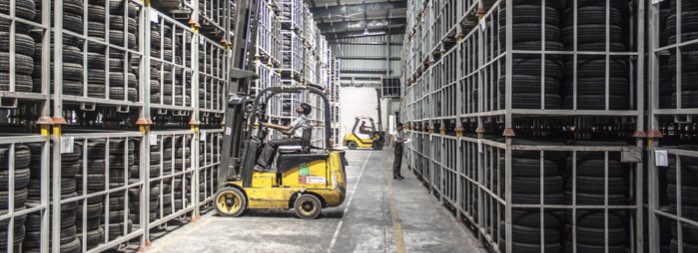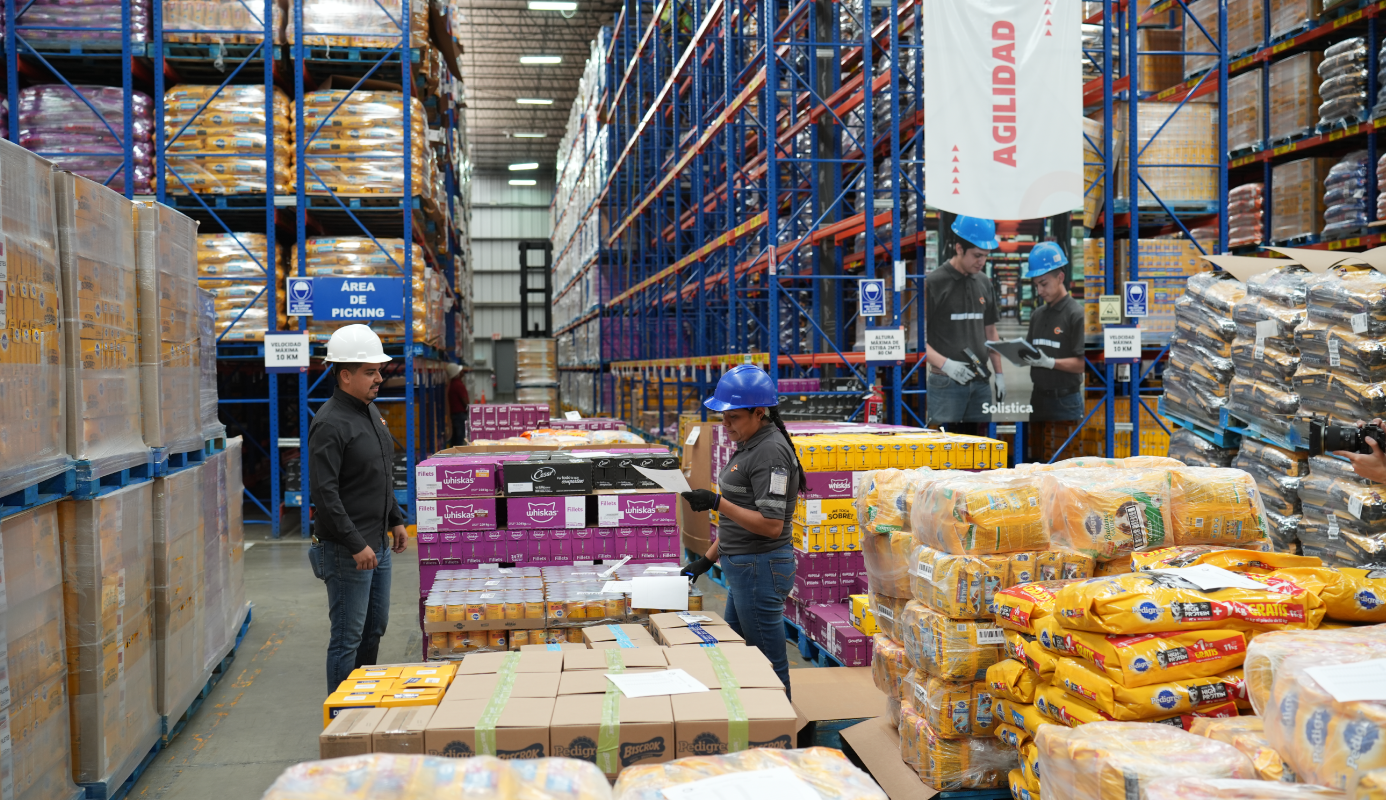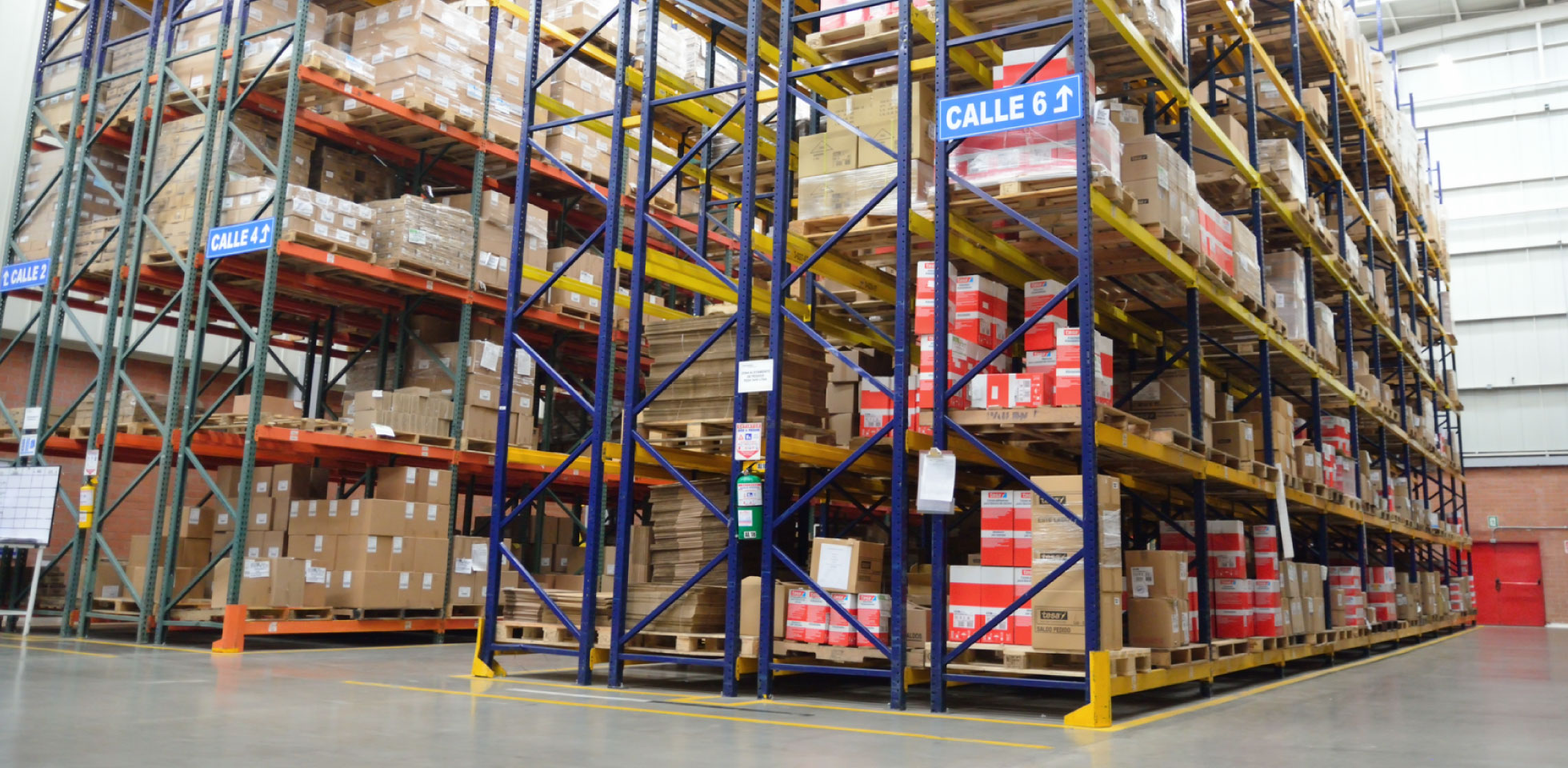Besides receiving and transferring goods, managing a warehouse includes planning the storage, supply, and control of the inventory. Looking for new and better ways to manage a warehouse may lower costs, save time, and increase both income and customer satisfaction.
Next, we show the most frequent challenges of managing inventories and some actions that help overcome them so we can have an efficient and reliable supply chain:
Excess stock
In some cases, when we store stock from a single channel, it is possible that it exceeds the acceptable level, which results in the accumulated goods becoming more of an expense than an income. Using omnichannel warehouses, rather than warehouses sorted out by channel, helps lower the total inventory of the supply chain, gives better visibility on the availability, and makes order preparation and reverse logistics easier.
Lack of space
The problem of not having enough space is that the goods will keep on accumulating inadequately, which may result in work accidents, time lost in locating the products, and a loss of quality of the merchandise.
To make the best use of the available space, we must improve the storage systems, the default selection routes, and the layouts of spaces and shelves, particularly in the reception area. Maximizing the vertical space increases the efficiency of the picking and dunnage operations and lowers the costs of inventory and operation.
Low traceability and connectivity
Thanks to technology, we can know now who manufactured the raw materials, who transported them, which lot they belong to, when where they moved, as well as the remaining stages and who was in charge. The inconvenient comes when we have to record every step of the chain in addition to obtaining and gathering the data so we can make the best use of it.
This problem may result in a loss of control over the goods and over the continuity of the supply. However, thanks to new software, apps, and tools, the connectivity within and outside the warehouse can be maximized and help plan and execute the supply chain.
Integrating the storage and recovery system (AS/RS) with the warehouse management system (WMS), makes the order fulfillment process more transparent and easier.
Excess procedures
This problem covers issues such as extra operations like rework, reprocessing, and unnecessary handling due to defects, overproduction, or shortage. By deleting unnecessary or obsolete steps, the process become more agile and fast and we improve client experience, income, and margins.
Incorrect time management
We can improve this issue noticeably by optimizing picking and the location of the inventory. Not knowing the location of products precisely impacts execution times and delays the whole supply chain.
Some automation tools, such as barcode technology, RFID labels, and order management systems, give us information about inventories and locations in real time so we can avoid repeating tasks and reduce execution times considerably.
Inaccurate inventory and outfitting
Having excess goods or a lack of them may become a problem because, at the end, it translates into storage expenses or lost sales.
For problems derived from inaccurate manual records and from a lack of merchandise monitoring, we suggest using an inventory management software that helps create accurate and transparent outfitting and ensure invoices match the purchasing orders.
Delays in the gathering process
To optimize the gathering and reverse logistics processes, we suggest avoiding entering SKUs manually and instead use scanners to get an updated reading of the inventory.
With a warehouse management system, we can plan more efficient gathering routes that result in shorter response times and greater employee productivity.
Damaged products
When an item gets damaged, it generates a cost for warehouse operations. To avoid this, we recommend using pallets that can be stowed, lifted, and wrapped. Likewise, we suggest having safe, well-lit, and clean facilities to protect not only our employees but also our products.
Being unprepared for the demand
Internal and external factors such as seasons, weather, and the economy contribute to the demand’s volatility. Having timely information may help forecast the demand correctly and, thus, avoid an excess inventory that raises storage costs, or a lack of stock that results in lost sales.
Issues with human capital
The lack of training and integration of employees may delay the whole chain, turn it inefficient, and create expenditures due to rework. Employees of the logistics department, and those related to it, must undergo constant warehouse management training and their Key Performance Indicators (KPIs) must reflect and assess their productivity throughout the supply chain.
Best Practices
Because of the major role supply chains have on client experience, there are some activities we recommend taking to improve the operation and administration of warehouses:
- Designing a suppliers’ fulfillment program improves the relationship between a company and its suppliers in terms of product handling and transport times.
- Setting up an electronic notification program makes warehouse operations, labor planning, and client satisfaction easier.
- Carrying out stock-taking cycles constantly rather than checking inventories in a typical fashion makes it easier for us to control our inventory and helps avoid interruptions and stoppages in operations.
- Using the cross-docking technique lets us move goods directly from the supplier’s plant to the client without having to store them, which helps optimize times.
- Implementing dynamic slotting makes it possible to constantly change the location of products within the warehouse according to demand.
Each company has its own needs regarding logistics, but there is no doubt that process automation is of great help to solve the issues of warehousing and to properly manage this function. Likewise, using continuous improvement techniques not only helps correct mistakes as they happen but also investigate the reasons and do the necessary modifications to avoid making those mistakes again.
There are logistics companies, like Solistica, that have warehousing expertise and may help with the automation of logistics processes and with warehouse management. They are so steeped in topics related to warehousing and distribution that they may also give you recommendations to make informed decisions and turn your supply chain into a competitive advantage.
 *This blog was originally published on June 10 2019 and modified on April 4 2022.
*This blog was originally published on June 10 2019 and modified on April 4 2022.






